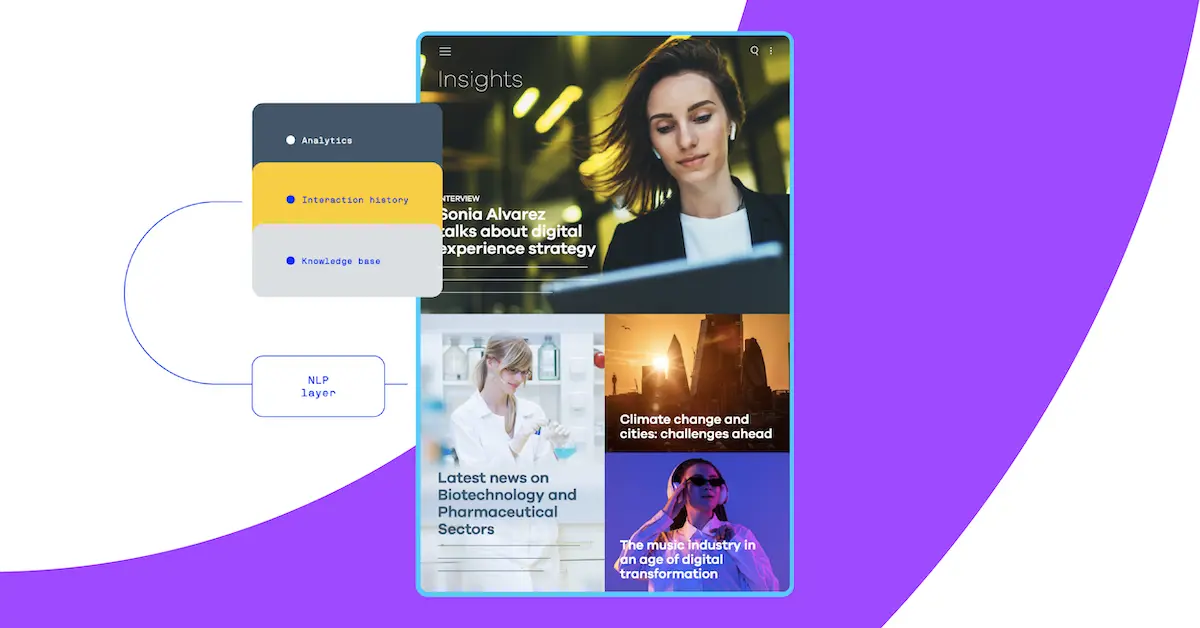How to encourage experimentation and champion change in your organization
Learn the most common challenges organizations are facing today when it comes to experimentation and how to overcome these issues in your business.

Digital technologies are transforming the global business environment, and there’s no sign of it stopping anytime soon. Businesses must reinvent themselves digitally to stay relevant or risk getting left behind in an ever-changing climate.
As this need for agility and adaptability grows, company leaders are increasingly turning to experimentation as a shortcut to decision-making and innovation – yet many struggle to reap its promise of creating and extending competitive advantage.
Not all companies are ready for experimentation
While the idea of experimentation seems straightforward, it can be surprisingly hard to implement. This is especially true for organizations with traditional cultures and structures, where team members must conform to a prescribed way of doing business.
Digital teams that have embarked on their experimentation journeys are frequently faced with the enormous task of unifying data and departmental silos. Oftentimes, this task is further complicated by the need to optimize processes and technology to deliver at speed.
These teams may also be under immense pressure to show immediate results, which leads to a crippling fear of failure that suffocates innovation before it can begin. Some organizations may even find themselves hamstrung by a lack of resources and relevant skills within teams to build quality experiments and keep things running smoothly.
Thus, shifting to an experimentation culture requires a fundamental change that runs through the whole organization. Whether you’re just getting started or looking to take your experimentation program to the next level, here are five things you should do to improve efficiency and outcomes.
5 ways to embed a culture of experimentation into your business
1. Get buy-in across the business
Gaining senior-level support is essential for the success of any new initiative. Demonstrating the value of experimentation and the risk of not doing it makes it easier to convince people at the senior level to lead change efforts, and that’s half the battle.
To ensure a smooth implementation and encourage participation across the organization, however, you need buy-in not just from senior management but also from departments and teams. Always keep in mind the human element in running experiments. Take others on the journey with you, so they can see firsthand what’s possible with experimentation. When you share the process, insights and outcomes of your experiments, others may commit to your cause more easily and even speak up on your behalf.
2. Reduce silos and red tape
In the early days of adopting experimentation, organizational and data silos can cause major roadblocks for decision-making and execution. Without breaking down these silos, it can be difficult for teams to secure approval across the business to get an experiment out the door.
Review your existing internal processes and systems to identify cultural, behavioral and organizational hurdles that stifle innovation and prevent agility. Remove unnecessary, burdensome red tape by automating workflows where possible. This way, you can minimize human touchpoints and enable higher velocity testing.
3. Build an integrated tech stack
Businesses often confuse investing in new technology with actually solving problems and improving outcomes. When there’s a lack of synergy between your business, digital and IT requirements, it will be challenging to get your experimentation program properly up and running, especially if your company runs on legacy and archaic backend systems.
Whether you decide to build your own or buy a solution out of the box, make sure your experimentation tool is well-integrated with the rest of your tech stack to streamline work processes. While there’s also the option of outsourcing your testing to external service providers, outdated technology can still delay your onboarding process if it isn’t optimized to integrate with third-party solutions.
4. Take a focused approach to experimentation
Sometimes, it’s better to do one big experiment than to run several smaller tests. When you’re faced with budget or resource limitations, try to think deeper about the changes you want to make before going into the testing stage. The ideation process may be longer, but having a clear goal helps a team stay focused, and it’ll be much easier to discern the value of the experiment afterward.
But to capture the true value of experimentation, you need to look beyond individual tests and optimizations. Consider what you can aim to accomplish over the next three to five years. Then create a vision and roadmap that can inform decision-making and guide your experimentation efforts.
5. Have a dedicated team to own and support initiatives
The truth is, while the pandemic has contributed much to the rise of experimentation in business, many companies seem to have adopted the practice merely as a one-off response to the crisis instead of implementing it as a solution for continuous improvement. In other words, these companies are at the risk of reverting to previous norms.
To ensure the continuity and success of your experimentation program, you need a visionary to drive the initiative and maintain support from the C-suite as well as a center of excellence to provide governance and strategy. This will be a group of people dedicated to enabling teams across the organization with the right information, tools and processes to embrace>
Realize the full potential of experimentation with Optimizely
An effective experimentation solution should allow you to quickly run experiments, uncover insights and make optimizations where it matters most for your business.
Optimizely Web Experimentation is the world’s leading platform for digital experimentation. Built for the enterprise, our platform offers front-end A/B and multi-page testing capabilities that are incredibly powerful and easy-to-use, enabling businesses to test, learn and innovate at speed.
To see how our experimentation platform can help your team drive productivity and accelerate outcomes, schedule a demo from Optimizely today.
